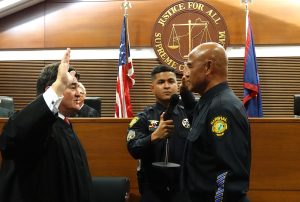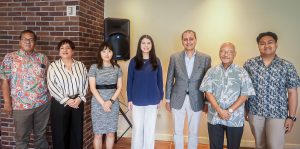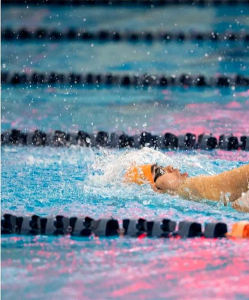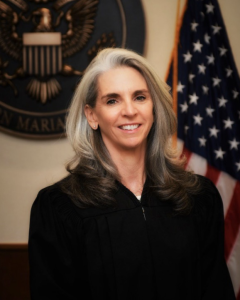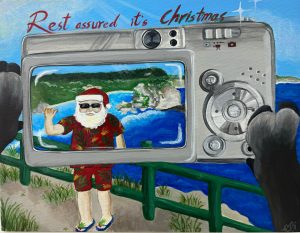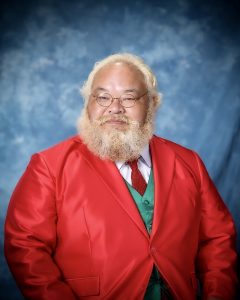Earth Day supplement
Today, April 22, marks the anniversary of the campaign – started back in the 1970 – to shed light on the deteriorating state of the environment and to inspire change in members of the community for the greater good of the environment.
In honor of the over 50-year movement, Saipan Tribune reached out to one of the CNMI’s champions in advocating for environmental conservation, Mariana Islands Nature Alliance (MINA) executive director Roberta Guerrero.
In an interview with Guerrero, she shares how MINA came to be in the first place.
“The founders of the Mariana Islands Nature Alliance (MINA) recognized the need to initiate collaborative efforts between the public and private sectors that would increase the effectiveness of conservation efforts in the CNMI. A workshop facilitated by The Nature Conservancy was held to share ideas, invigorate the nonprofit environmental community, discuss potential collaboration and formulate plans that would address filling in the gaps in conservation that existed at the time,” she said.
After MINA founding fathers reached out to The Nature Conservancy to facilitate the first workshop aimed towards bringing both the CNMI private and public sectors together in the fight to preserve the CNMI’s environment back in the early 2000s, MINA was born.
“The outcome of this initial meeting was the founding of the Mariana Islands Nature Alliance with the proclamation that ‘There is a clear understanding that we, the people of the Northern Mariana Islands, have the right and responsibility to act as stewards of our own natural inheritance. We feel that community involvement in conservation and management is the only way to achieve long-term preservation of our resources, and that NGO’s can mobilize this involvement.’ Thus began the journey to establish a 501(c)3 Non-profit Corporation, the Mariana Islands Nature Alliance, which became official in May of 2005,” said Guerrero.
After their establishment, MINA’s first funded project was the Obyan rehabilitation that prevented vehicles from driving on the beach due to the presence of sea turtle nesting sites.
Since their establishment, has achieved numerous wins in terms of environmental conservation; the most notable being its Habitat Restoration project where they were able to work with partners and volunteers to remove over 79,000 lbs of debris from our oceans.
“MINA’s tangible outcomes of the programs currently being implemented have data to support the continuation and sustainability of these programs. Of specific note are the results of a major Habitat Restoration project with more than 79,047 lbs of marine debris removed over the past two years, and a total of 1,861 acres under water habitat restored. Another major win for MINA is community engagement with more than 1,500 volunteers coming out to support events such as beach cleanups, plastics sorting, and tree planting,” said the executive director.
Meanwhile, this year’s Earth Day celebration theme is “Planet vs. Plastics”. When asked about what MINA’s initiatives are in terms of battling plastic pollution in the CNMI, Guerrero said one of its long-ongoing projects in relation to this problem is its “Adopt-a-bin” campaign.
“We’ve all witnessed plastic pollution on land and sea. Litter can be found on our public beaches and other areas, including illegal dumpsites. Absolutely, plastic pollution is a problem on our islands. It harms our environment, human health, economy, and is a serious threat to our island ecology, causing ingestion, entanglement, and habitat damage. MINA partners with government agencies, schools, and the business community to take positive steps to help reduce the amount of plastic debris that makes its way to our ocean. The first of many of MINA’s long-standing programs, known as ‘Adopt-a-Bin’ has been ongoing since 2010. Recycling bins are placed at eleven different sites at public beaches and parks. Data collected in 2023 yielded, on average, 1020 lbs. of plastics, along with 1,020 lbs of aluminium cans, and 3,228 lbs of glass bottles collected, indicating that beachgoers are utilizing the bins,” she said.
The most recent initiative MINA has started to curb plastic pollution in the CNMI is its “Community Recycles Plastics” program.
“With the knowledge that Saipan doesn’t have potable water, MINA’s team reached out to the Public School System Office of Nutrition requesting data on the amount of plastic water bottles distributed through the school lunch program. The data that came back was an astounding number of 3,392,800 / 8oz water bottles distributed to the students over a period of 180 school days, not counting the consumption of bottled water by the general community throughout the year. This data led to MINA’s interest in searching for a solution to begin to address plastic pollution in the CNMI. This vision became a reality when MINA was able to purchase plastic upcycling machines that process plastics into usable products with the goal of keeping plastics out of the ocean and landfill and creating a circular economy, the first of its kind in the CNMI.” Said Guerrero.
In regards to these environmental projects (and numerous other), MINA partners with the Division of Coastal Resources Management, the Division of Environmental Quality, the Division of Fish and Wildlife and the Division of Forestry.
MINA has also garnered the support of many of the businesses in the CNMI who support the fundraising efforts at MINA’s Annual Green Gala. Additionally, Saipan’s major hotels engage their staff and management in beach cleanup events, tree planting, and other environmental initiatives.
Also, MINA has partnered with DanDan Middle School, Saipan International School, Northern Marianas College, and Northern Marianas Technical Institute to house what are known as the “3 in 1 upcycling machines”.
MINA currently has collection points at twelve schools, three government offices, one community hub, and two commercial businesses.
“Through the engagement of community partners such as government organizations, schools, private business establishments, and volunteer organizations, MINA creates programs that not only encourage the involvement of the community but also depend on this support for the successful implementation and sustainability of the programs. There’s a saying, ‘it takes a village,’ and in the case of environmental stewardship here in the CNMI, the community has really stepped up in partnerships with MINA’s ongoing programs,” Guerrero said.
Guerrero also shared other long-standing programs that MINA has initiated over the years are the Schools for Environmental Conservation (SFEC) and the Tasi Watch Ranger Program.
“The SFEC Program is tailored to the middle-school-aged audience with presentations on environmental issues such as climate change, the critical nature of watersheds, marine debris prevention, on-campus rain gardens and other environmental issues coordinated with the schools’ science teachers. MINA’s Tasi Watch Ranger program is a workforce development initiative that engages unemployed youth who are high school graduates, many of whom are students at Northern Marianas College. The Rangers become the Eyes of the Ocean and are trained in best practices for environmental stewardship, including coral restoration, invasive species monitoring and removal, marine debris prevention, native species tree propagation and planting. The Rangers also do presentations on environmental issues at outreach activities at schools and community events, which gives them valuable experience in public speaking,” she said.
MINA fosters community and science-based conservation programs to enhance and sustain the CNMI’s environments and cultures.
If you’d like to support MINA’s efforts in empowering communities for conservation, please contact minaoutreach@gmail.com, website www.minapacific.org, or follow them on Facebook /MINAPACIFIC, and Instagram @minaoutreach.
Contributions for conservation can be made by clicking on the link below that connects to MINA’s Paypal and online volunteer applications.

